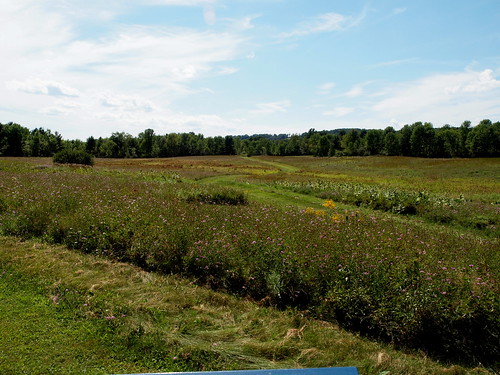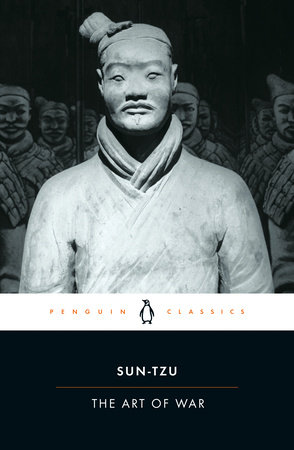As at the pivotal War of the Rebellion Gettysburg battle site, at this pivotal battle site of the War of Independence, we were surrounded by contemporary farmland and -- vast tracks of trees and swathes of grass and dense woods, which one knew were filled with deer, deer who were populated with ticks.
There are still uprooted trees and broken trees everywhere from the terrible storm this last spring. Park service employees, or at least hired help with chain saws, were working in various parts. They sent up so much sawdust / chaff that people with allergies and other respiratory sensitivities had to stay far from where they were working. So we missed some overlook sites of significant events of the two battles and the surrender.
The battle of Freeman's Farm was September 19th, 1777, which Burgoyne barely won, with a greater loss of men than the Americans. The battle of Bemis Heights was October 7, 1777, which Burgoyne definitively lost. The surrender by General Burgoyne came, finally, ten fuming days later, on October 17th, 1777. General Burgoyne negotiated with Gates to turn the signing of a surrender into the signing of a "convention." (How could he, a British lord, lose and surrender to hicks?) So we have the "Convention of Saratoga." General Gates allowed Burgoyne to keep his sword, and the mostly Hessian army was awarded the honors of war -- doubtless the cause of yet another heated exchange between him and Arnold.
Both Colonel Morgan. who had served in Arnold's abortive campaign to take Quebec, and Colonel Andrzej Tadeusz Bonawentura Kościuszko played important roles in this pivotal historical event.
 |
| Kościuszko Bridge across the Mohawk River |
We, meaning our dear friend, Ben, Ned and me, cheered wildly when we crossed the Kościuszko Bridge, on our way to the GWB -- i.e. the George Washington Bridge, which always tells us we're nearly home -- well, nearly home, depending on the traffic. We happened to make great time Saturday -- no traffic.
At the battlefield park, we often we chose not to walk to overlooks of various sites of the battles because, despite the grass have been mowed short, it was still grass and we kept thinking of ticks, even though there were no overhanging tree branches -- but the grass was surrounded by trees.
Despite the great damage wreaked by the spring storms up there, with the high heat, the high humidity, the rain -- it's become jungle-like. Things are beginning to look more like what the Dutch must have seen when they arrived in the 17th century, one imagines.
Our Saratoga experiences were far from our everyday lives and environment. Monsoon Friday night -- Host's pool had to be out-pumped as it was overflowing from the amount of rain (more than one deluge) and then again starting about 7 PM. There are so many large windows in his wonderful house, that Saturday morning when we got up to go home, with the mist, the lowering skies, intermittent mizzle, and the condensation on the pane glass -- we felt we had been put in a massive, comfortable, mysterious aquarium. There was a world outside but we were imprisoned, thus shielded from it. Internet remained wonky at best, which it often is up there, particularly with as much thunder and lightning as went on Friday night. Somehow, nobody thought to turn on a tv or a radio. There are televisions in Host's house and state-of-the-art video / streaming hookup to them though there are no radios.
Host says he's forgotten about the televisions. They were used constantly while, over a very long year, his beloved, still mourned, wife died of a terrible cancer. During that year she watched repetitiously a certain cycle of BBC series. Once they reached the end of the final season, they'd start over immediately from the first episode of the first season. He hasn't bothered with television since her funeral.
As we drove home yesterday through the encroaching dense tree verges, under low clouds and rising mist we felt out of time, speeding silently among the strange and unknown. "Where are we?" Our lives seemed very far away and long ago. We were just -- here. We couldn't believe how short the time by clock was that we actually had been gone. In fact, almost immediately we arrived in his driveway, Host lost his watch. Had we been enchanted, we wondered as we drove south, back to New York City.
Catskills, Adirondacks, they are really all one. Maybe we caught a whiff of what inspired Washington Irving to pen “Rip Van Winkle.”
It didn't hurt anything either that several sign-ups for Postmambo events came in while in Saratoga, and more after we arrived back home. -- events which also take the participants entirely out of their lives and where time stops, except for the rhythms measured by the drums. Our Host has been on these with us. He is going on two more -- to Haiti and to Havana. El V played Host Vodun muisc and showed videos recorded during his prospecting journey back in July.
Within 15 seconds of we having left his driveway, Our Host's watch reappeared.











